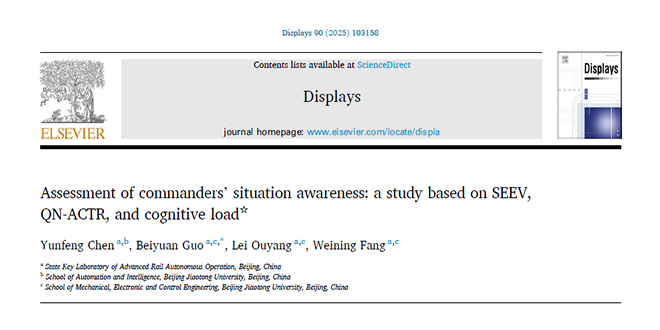In modern naval ship command environment, commanders must collaborate with the Command and Control System (C2S) in various scenarios to accomplish complex tasks. Commanders’ effective Situational Awareness (SA) is crucial for effective human–computer collaborative decision-making. To improve the assessment of SA during the commanders’ interaction with the C2S and enhance collaborative efficiency, this paper proposes an improved SA model. This model builds upon a previously developed SA model based on attention allocation and integrates the Queueing Network Adaptive Control of Thought-Rational (QN-ACTR) framework to quantitatively analyze the commanders’ cognitive processes. Furthermore, cognitive load theory is introduced to account for individual differences among commanders. To validate the improved SA model, we conducted simulation experiments involving 23 participants across four different interaction schemes. The subjective scores and eyetracking data collected during the experiments validate the efficacy of the proposed SA model. The results showed that the proposed SA model can predict the SA of commanders with varying anti-fatigue levels and perform better than the previous model. Furthermore, the findings also indicate that cognitive load and suboptimal interface designs can negatively impact the commanders’ perception and comprehension, reducing the commanders’ SA level. This study provides a new tool for the quantitative measurement of commanders’ SA, which will aid in the development of more effective C2S for naval ships and optimize human–computer interaction design.
Yunfeng Chen, Beiyuan Guo , Lei Ouyang , Weining Fang.Assessment of commanders’ situation awareness: a study based on SEEV,QN-ACTR, and cognitive load.Displays. https://doi.org/10.1016/j.displa.2025.103158
 复杂系统人因与工效学研究所
复杂系统人因与工效学研究所

